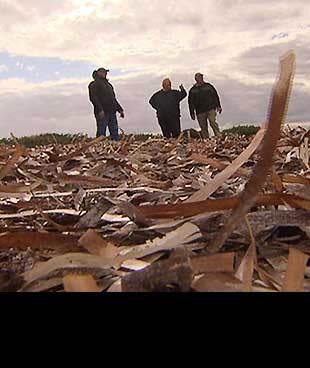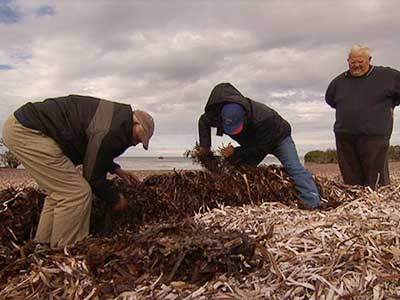Dead seagrass could be linked to treatment plant
Experts say a build-up of seagrass on South Australia's mid-north coast could be linked to the Bolivar wastewater treatment plant.
Locals say hundreds of tonnes of seagrass have washed up , preventing them from using the beach.
Ray Billing and his mates have been fishing at Bald Hill Beach for decades, but over the past five years, they have watched it disappear before their eyes.
“It’s gone from a pristine beach of shell grit and a beautiful place to come and fish to a natural disaster.” Mr Billing said.
They said hundreds of tonnes of dead seagrass have washed up and engulfed the beach.
They believe the Bolivar wastewater treatment plant down the coast is to blame.
“We’re the rubbish tip from anywhere down south, it finishes up here,” fisherman Jeff Sutton said.
Experts have said although that is true, this gradual wash up is thanks to Mother Nature.
“Mainly due to water quality changes from both storm water and effluent discharge,” seagrass expert Doug Fotheringham said.
“I think up in locations like Bald Hill Beach it will be a natural accumulation.”
The Environmental Protection Agency (EPA) said testing has shown no abnormalities in the effluent water that enters the gulf from the Bolivar plant.
Locals said they have tried telling authorities, but the problem has become so bad they have abandoned going to the beach altogether.
“It’s out of sight and its out of mind, it’s not Glenelg and it’s not Black Point so we’re stuck with it,” Mr Sutton said.



